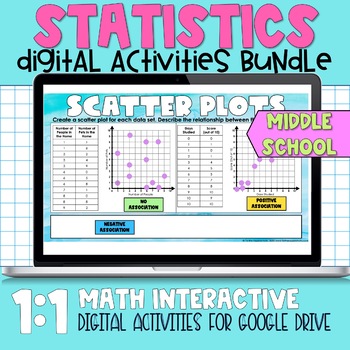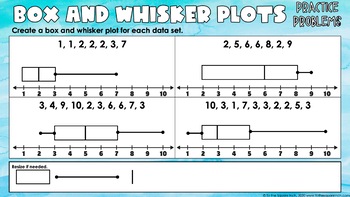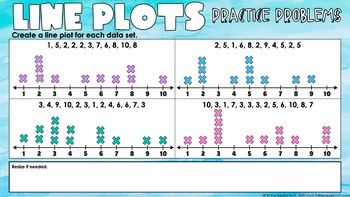Statistics Digital Activities
To the Square Inch- Kate Bing Coners
16.3k Followers
Grade Levels
6th - 8th
Subjects
Standards
CCSS6.SP.A.1
CCSS6.SP.A.2
CCSS6.SP.A.3
CCSS6.SP.B.4
CCSS6.SP.B.5
Formats Included
- Google Drive™ folder
- Internet Activities
Pages
14 pages
To the Square Inch- Kate Bing Coners
16.3k Followers

Includes Google Apps™
This bundle contains one or more resources with Google apps (e.g. docs, slides, etc.).
Products in this Bundle (7)
showing 1-5 of 7 products
Also included in
- Middle School Math Drag and Drop Digital Activities for Google Drive for Distance Learning It currently contains 101 Digital Math Activities. You will receive new activities for free.Activities Included:1. Adding Integers2. Area of Rectangles and Parallelograms 3. Area of Rectangles4. Area of CirclePrice $250.00Original Price $360.50Save $110.50
Description
Middle School Math Statistics Digital Activities for Google Drive for Distance Learning
Activities Included:
1. Histograms
2. Statistical Questions
3. Scatter Plots
4. Stem and Leaf Plots
5. Line Plots
6. Measures of Central tendency
7. Box and Whisker Plot
Total Pages
14 pages
Answer Key
Included
Teaching Duration
N/A
Report this resource to TPT
Reported resources will be reviewed by our team. Report this resource to let us know if this resource violates TPT’s content guidelines.
Standards
to see state-specific standards (only available in the US).
CCSS6.SP.A.1
Recognize a statistical question as one that anticipates variability in the data related to the question and accounts for it in the answers. For example, “How old am I?” is not a statistical question, but “How old are the students in my school?” is a statistical question because one anticipates variability in students’ ages.
CCSS6.SP.A.2
Understand that a set of data collected to answer a statistical question has a distribution which can be described by its center, spread, and overall shape.
CCSS6.SP.A.3
Recognize that a measure of center for a numerical data set summarizes all of its values with a single number, while a measure of variation describes how its values vary with a single number.
CCSS6.SP.B.4
Display numerical data in plots on a number line, including dot plots, histograms, and box plots.
CCSS6.SP.B.5
Summarize numerical data sets in relation to their context, such as by:






